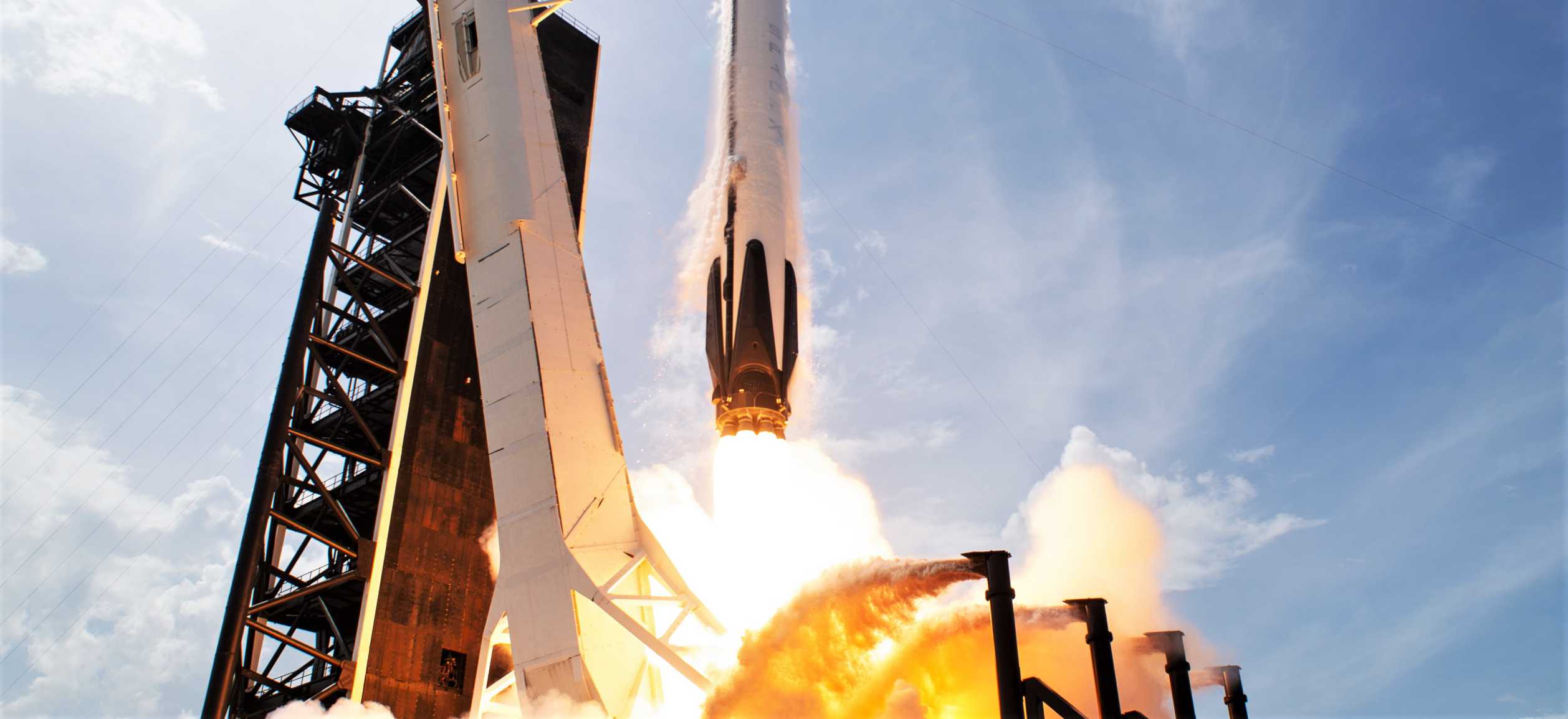
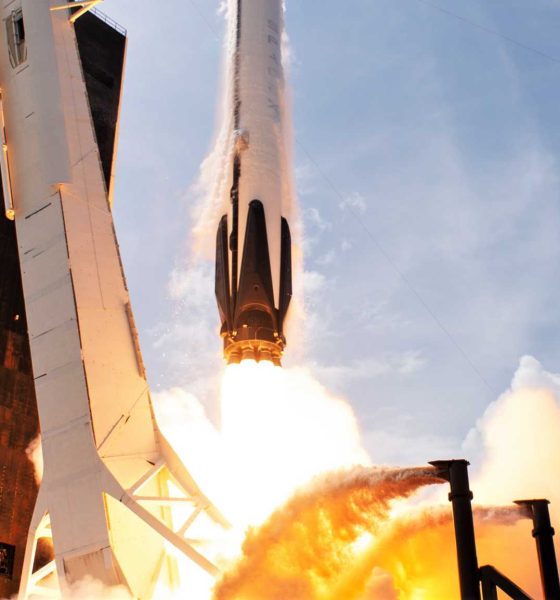
News
SpaceX’s month-long launch blitz adds Korean military satellite mission
Preliminary schedules show that SpaceX – on top of plans for a record-breaking four-launch month – wants to add a Korean military satellite launch to the mix, meaning that the company could attempt five launches in five weeks.
SpaceX partially broke the news on June 9th when it opened media accreditation for the Korean military mission, scheduled to launch no earlier than (NET) July. LaunchPhotography.com was able to get even more specific, stating that South Korea’s ANASIS II communications satellite could lift off on a Falcon 9 rocket sometime in early July, while Teslarati has learned that the mission is tentatively scheduled to launch as soon as the second week of the month.
If SpaceX manages to launch Starlink-8, Starlink-9, and GPS III SV03 on time this month and can turn its Kennedy Space Center (KSC) LC-39A pad around in time for South Korea’s ANASIS II by July 8th, it’ll have sustained a weekly launch cadence for well over a month. The odds are heavily stacked against SpaceX’s favor but with Starlink V1 L8 on track for a June 12th launch and Starlink V1 L9 expedited from June 24th to June 22nd, the company actually has a shot at completing five launches in five weeks.
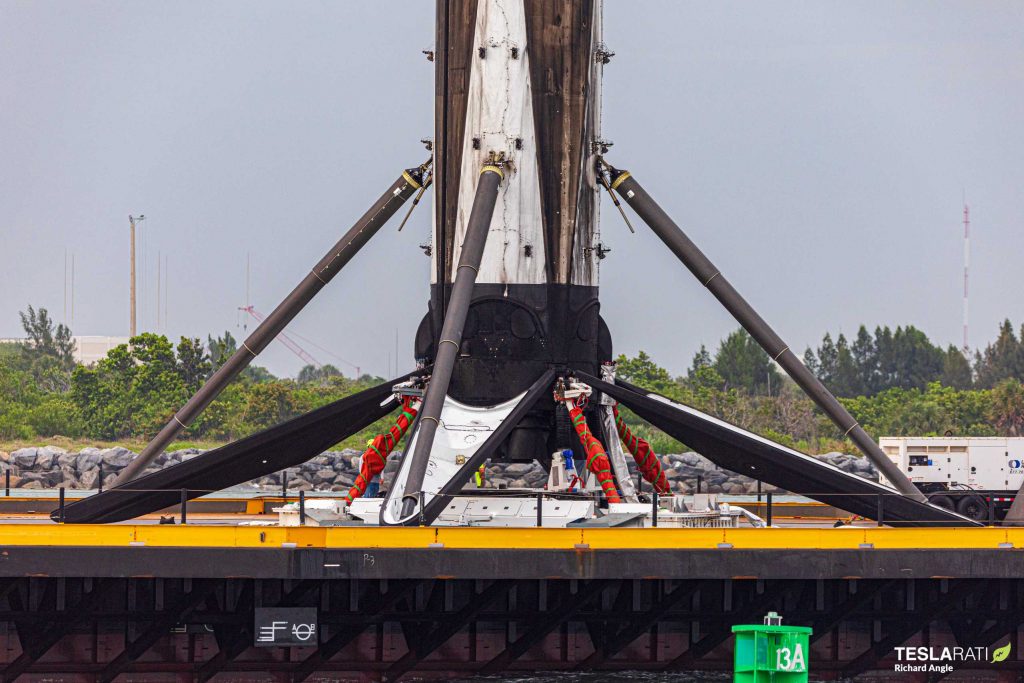
To achieve that feat, SpaceX will have to rely heavily on its small fleet of flight-proven Falcon 9 boosters and – barring a surprise – will need to smash its record for time between flights of the same rocket. On June 3rd, Falcon 9 booster B1049 successfully launched the 7th Starlink v1.0 mission while also becoming the first SpaceX rocket to complete five orbital-class launches and landings.

Up next, Falcon 9 B1059 is scheduled to launch the 8th batch of 60 upgraded Starlink satellites as early as 5:42 am EDT (09:42 UTC) on June 12th – hopefully the booster’s third successful launch and landing in six months.
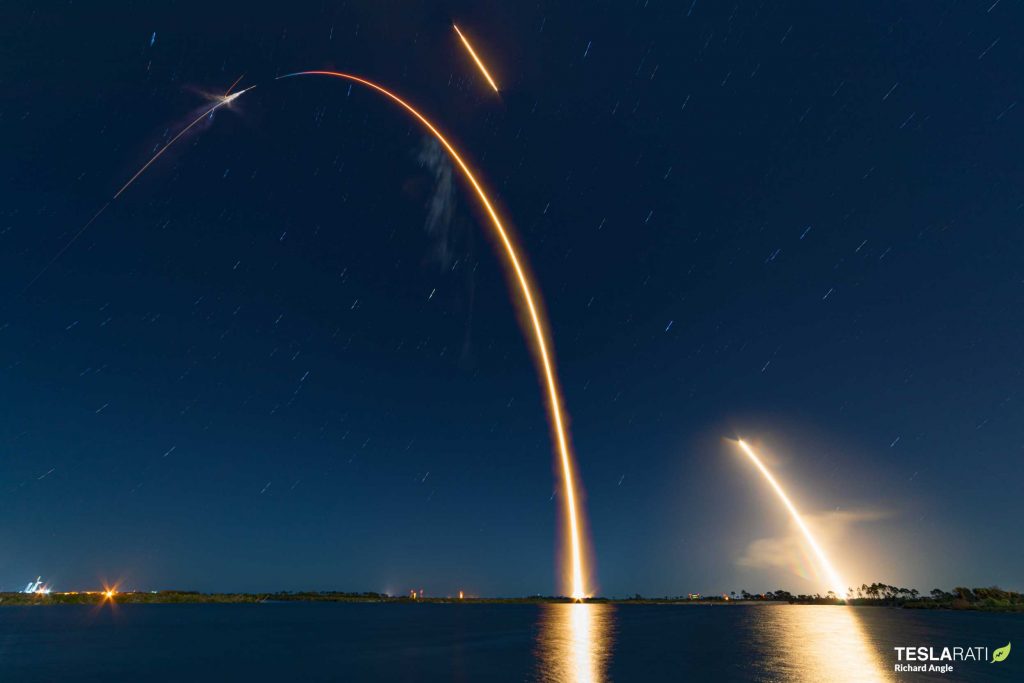
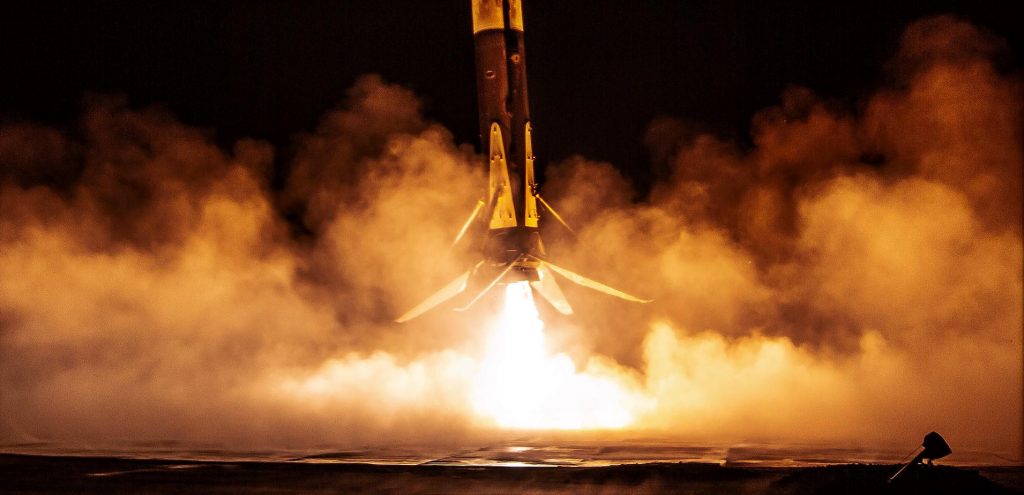
Third in line for the month of June, Starlink V1 L9 is scheduled to launch no earlier than (NET) 6:20 pm EDT (22:20 UTC) on June 22nd. Falcon 9 B1051.4 is likely assigned to the mission, meaning that SpaceX could launch a second booster for the fifth time less than three weeks after B1049 became the first to do so.
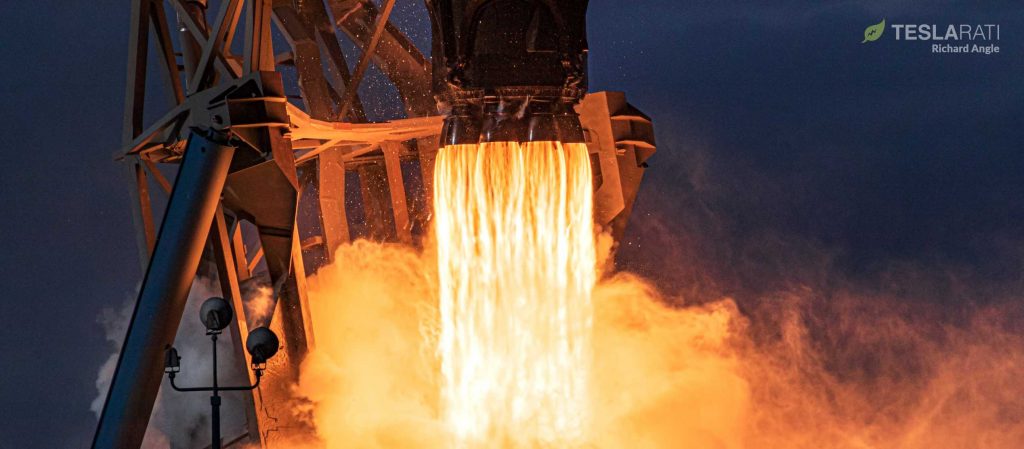
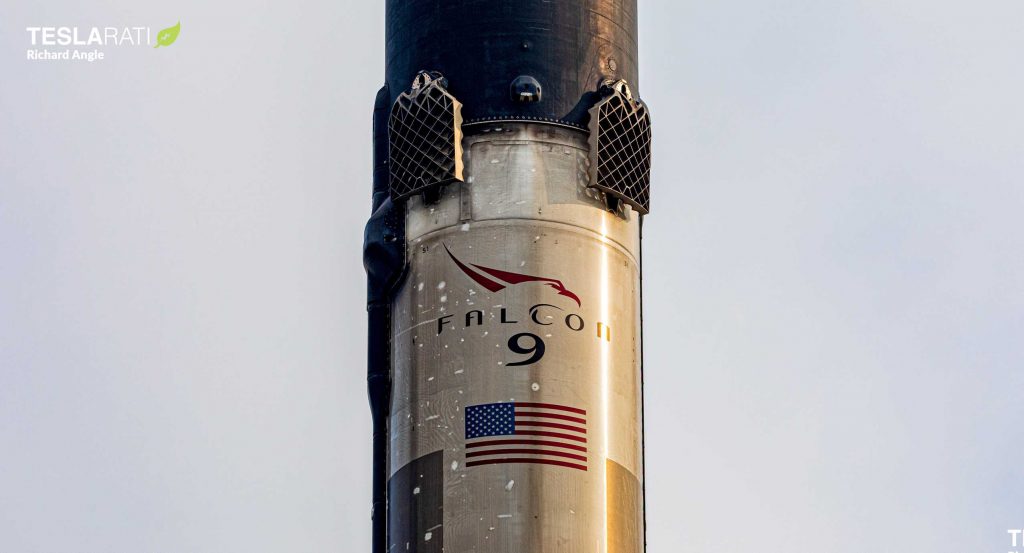
Rounding out a potentially record-breaking June, new Falcon 9 booster B1060 could launch the US Air/Space Force’s third upgraded GPS III navigation satellite at 3:55 pm EDT (19:55 UTC) on June 30th, the last day of the month. Like all of the missions that preceded it, B1060 needs a drone ship to land on in the Atlantic Ocean, meaning that Just Read The Instructions (JRTI) and Of Course I Still Love You (OCISLY) will have to remain continually active throughout the month, taking turns on every other launch.
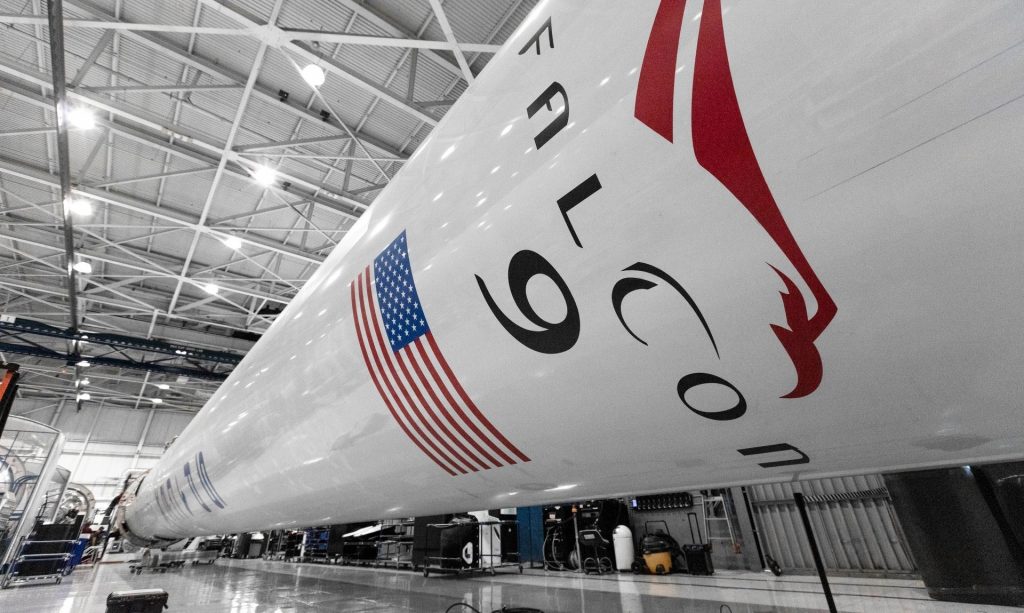
This leaves South Korea’s ANASIS II military communications satellite, currently scheduled to launch in early July – about a week after SpaceX’s GPS III SV03 mission. Excluding a new booster assigned to Crew Dragon’s next astronaut mission and Falcon Heavy side boosters B1052 and B1053, AWOL since their second and most recent launches almost a year ago, the five launches prior to ANASIS II will have technically used SpaceX’s entire booster fleet.
Short of a miraculous few-week turnaround of B1049, B1059, or B1051, the likeliest candidate for the mission is the same booster that launched astronauts for the first time ever on May 30th – B1058. To launch ANASIS II in early July, B1058 would need to crush B1056’s previous record of 62 days by a third or more to perform two orbital-class missions in just 40 days or less. All things considered, if SpaceX can pull off such an ambitious string of launches while pushing several envelopes of rocket reusability, the company will have demonstrated the ability to sustain the near-weekly launch cadence it will need to efficiently complete its Starlink satellite constellation.
Check out Teslarati’s Marketplace! We offer Tesla accessories, including for the Tesla Cybertruck and Tesla Model 3.

News
Tesla FSD Supervised wins MotorTrend’s Best Driver Assistance Award
The decision marks a notable reversal for the publication from prior years, with judges citing major real-world improvements that pushed Tesla’s latest FSD software ahead of every competing ADAS system.

Tesla’s Full Self-Driving (Supervised) system has been named the best driver-assistance technology on the market, earning top honors at the 2026 MotorTrend Best Tech Awards.
The decision marks a notable reversal for the publication from prior years, with judges citing major real-world improvements that pushed Tesla’s latest FSD software ahead of every competing ADAS system. And it wasn’t even close.
MotorTrend reverses course
MotorTrend awarded Tesla FSD (Supervised) its 2026 Best Tech Driver Assistance title after extensive testing of the latest v14 software. The publication acknowledged that it had previously criticized earlier versions of FSD for erratic behavior and near-miss incidents, ultimately favoring rivals such as GM’s Super Cruise in earlier evaluations.
According to MotorTrend, the newest iteration of FSD resolved many of those shortcomings. Testers said v14 showed far smoother behavior in complex urban scenarios, including unprotected left turns, traffic circles, emergency vehicles, and dense city streets. While the system still requires constant driver supervision, judges concluded that no other advanced driver-assistance system currently matches its breadth of capability.
Unlike rival systems that rely on combinations of cameras, radar, lidar, and mapped highways, Tesla’s FSD operates using a camera-only approach and is capable of driving on city streets, rural roads, and freeways. MotorTrend stated that pure utility, the ability to handle nearly all road types, ultimately separated FSD from competitors like Ford BlueCruise, GM Super Cruise, and BMW’s Highway Assistant.
High cost and high capability
MotorTrend also addressed FSD’s pricing, which remains significantly higher than rival systems. Tesla currently charges $8,000 for a one-time purchase or $99 per month for a subscription, compared with far lower upfront and subscription costs from other automakers. The publication noted that the premium is justified given FSD’s unmatched scope and continuous software evolution.
Safety remained a central focus of the evaluation. While testers reported collision-free operation over thousands of miles, they noted ongoing concerns around FSD’s configurable driving modes, including options that allow aggressive driving and speeds beyond posted limits. MotorTrend emphasized that, like all Level 2 systems, FSD still depends on a fully attentive human driver at all times.
Despite those caveats, the publication concluded that Tesla’s rapid software progress fundamentally reshaped the competitive landscape. For drivers seeking the most capable hands-on driver-assistance system available today, MotorTrend concluded Tesla FSD (Supervised) now stands alone at the top.
News
Elon Musk’s Grokipedia surges to 5.6M articles, almost 79% of English Wikipedia
The explosive growth marks a major milestone for the AI-powered online encyclopedia, which was launched by Elon Musk’s xAI just months ago.

Elon Musk’s Grokipedia has grown to an impressive 5,615,201 articles as of today, closing in on 79% of the English Wikipedia’s current total of 7,119,376 articles.
The explosive growth marks a major milestone for the AI-powered online encyclopedia, which was launched by Elon Musk’s xAI just months ago. Needless to say, it would only be a matter of time before Grokipedia exceeds English Wikipedia in sheer volume.
Grokipedia’s rapid growth
xAI’s vision for Grokipedia emphasizes neutrality, while Grok’s reasoning capabilities allow for fast drafting and fact-checking. When Elon Musk announced the initiative in late September 2025, he noted that Grokipedia would be an improvement to Wikipedia because it would be designed to avoid bias.
At the time, Musk noted that Grokipedia “is a necessary step towards the xAI goal of understanding the Universe.”
Grokipedia was launched in late October, and while xAI was careful to list it only as Version 0.1 at the time, the online encyclopedia immediately earned praise. Wikipedia co-founder Larry Sanger highlighted the project’s innovative approach, noting how it leverages AI to fill knowledge gaps and enable rapid updates. Netizens also observed how Grokipedia tends to present articles in a more objective manner compared to Wikipedia, which is edited by humans.
Elon Musk’s ambitious plans
With 5,615,201 total articles, Grokipedia has now grown to almost 79% of English Wikipedia’s article base. This is incredibly quick, though Grokipedia remains text-only for now. xAI, for its part, has now updated the online encyclopedia’s iteration to v0.2.
Elon Musk has shared bold ideas for Grokipedia, including sending a record of the entire knowledge base to space as part of xAI’s mission to preserve and expand human understanding. At some point, Musk stated that Grokipedia will be renamed to Encyclopedia Galactica, and it will be sent to the cosmos.
“When Grokipedia is good enough (long way to go), we will change the name to Encyclopedia Galactica. It will be an open source distillation of all knowledge, including audio, images and video. Join xAI to help build the sci-fi version of the Library of Alexandria!” Musk wrote, adding in a later post that “Copies will be etched in stone and sent to the Moon, Mars and beyond. This time, it will not be lost.”
News
Tesla Model 3 becomes Netherlands’ best-selling used EV in 2025
More than one in ten second-hand electric cars sold in the country last year was a Tesla Model 3.

The Tesla Model 3 became the most popular used electric car in the Netherlands in 2025, cementing its dominance well beyond the country’s new-car market.
After years at the top of Dutch EV sales charts, the Model 3 now leads the country’s second-hand EV market by a wide margin, as record used-car purchases pushed electric vehicles further into the mainstream.
Model 3 takes a commanding lead
The Netherlands recorded more than 2.1 million used car sales last year, the highest level on record. Of those, roughly 4.8%, or about 102,000 vehicles, were electric. Within that growing segment, the Tesla Model 3 stood far ahead of its competitors.
In 2025 alone, 11,338 used Model 3s changed hands, giving the car an 11.1% share of the country’s entire used EV market. That means more than one in ten second-hand electric cars sold in the country last year was a Tesla Model 3, Auto Week Netherlands reported. The scale of its lead is striking: the gap between the Model 3 and the second-place finisher, the Volkswagen ID3, is more than 6,700 vehicles.
Rivals trail as residual values shape rankings
The Volkswagen ID.3 ranked a distant second, with 4,595 used units sold and a 4.5% market share. Close behind was the Audi e-tron, which placed third with 4,236 registrations. As noted by Auto Week Netherlands, relatively low residual values likely boosted the e-tron’s appeal in the used market, despite its higher original price.
Other strong performers included the Kia Niro, the Tesla Model Y, and the Hyundai Kona, highlighting continued demand for compact and midsize electric vehicles with proven range and reliability. No other model, however, came close to matching the Model 3’s scale or market presence.








